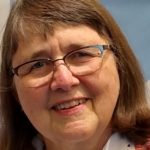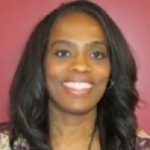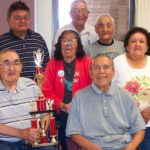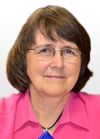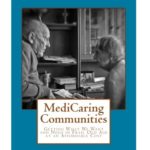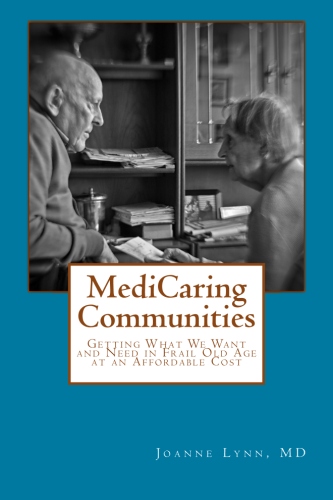By Joanne Lynn
Medicare fee-for-service (FFS) beneficiaries with advanced illnesses and worsening disabilities, and the clinicians who focus on serving them, could wind up becoming big losers if MACRA (Medicare Access and CHIP Reauthorization Act of 2015) is implemented without sufficient attention to the realities of caring for these vulnerable populations. But there are ways in which we just might thread the needle and come out with sustainable excellence. Our future will depend a great deal on sustained activism by consumer advocates, clinicians, and caregivers, along with a heavy dose of thoughtful model-building.
MACRA is the payment scheme that replaces Congress’ annual drama of delaying implementation of the “Sustainable Growth Rate” payment system, which would have adjusted FFS reimbursements for physicians downward each year since 2002. MACRA directly affects only Medicare Part B payments. These are mostly payments to physicians but will also affect other provider reimbursements as well. The statute is complicated, and the proposed regulations run almost 1000 pages, but the potential impact upon the care of frail and disabled elderly people and their clinicians is easy to trace.
Physicians (and most others who are paid under Part B, such as nurse practitioners,) will automatically be in the “MIPS” (Merit-based Incentive Payment System) of MACRA. That looks to be very challenging for clinicians who focus on serving very sick and disabled elders. Each physician’s payment will be adjusted by a score that depends upon four factors: quality, cost, information technology (IT) use, and improvement activities. Quality measures Medicare now uses are mostly irrelevant to this population (e.g., cholesterol and lipid management and cancer screening) and some are even harmful (e.g., conventional diabetes and hypertension control). A few calamities give rise to relevant quality measures, such as onset of pressure ulcers or falls with injury, but these are rare events, even in high-risk populations, and most physicians won’t have many. Furthermore, our eldercare patients are costly, often in ways that are not captured in risk adjustment, such as having inadequate family caregivers or displaying very difficult behavioral problems. And nursing homes, assisted living centers, hospice programs, and home care have never received the federal funding and technical assistance needed to launch and integrate information technology, so performing well on IT use is going to be difficult.
Therefore, practitioners focused on frail and sick elderly people are sure to lose in MIPS, which has to stay revenue neutral: the model is designed such that every physician who “wins” in MIPS has to have a counterbalancing physician who “loses.” How badly geriatricians will lose will depend upon who they are compared with, but there’s no comparison group in which we can “win.” Since it is already very difficult to justify working in geriatrics, where clinician incomes are lower than other primary care, this will be a severe blow. We should rally to improve the metrics in MIPS, but that will take time and might never work adequately.
But there is another part of MACRA, called APMs, for Advanced Payment Models. Being qualified to be paid under an APM will earn the clinician a 5% bonus, without the downside risk of MIPS, as described above, and with a much better update in the fee schedule over time. The requirements for APMs are not settled yet, but some form of patient-centered medical home and accountable care organizations will count (as required by statute). Medicare’s new Comprehensive Primary Care Plus (CPC+) will qualify. Basically, an APM has to aim to improve care and reduce costs, and to have the clinical service provider take on more than nominal risk. Clinical specialty societies of every stripe are jumping on board with working parties around particular procedures or diagnostic categories—creating dozens of potential APMs.
However, our elders with frailty, disability, or advanced illness can’t effectively be carved up into procedures and single diagnoses. When we are old and sick, we need comprehensive care planning, reliability across time and settings, attention to the burdens on family and the costs, comfort, respect, and meaningfulness, and, finally, life closure. These are fundamentally not episodic or time-limited, nor restricted to one domain of specialization. Arranging home-delivered food may be more important than managing diabetes. Indeed, what matters is radically up to the elder and family—no one set of conventional quality measures could address the variety of situations, preferences, and possibilities. The quality measures that will matter most will include alignment with the elder’s goals, and ongoing evaluation of the performance of care plans. Of course, understanding that alignment requires having come to know the patient and family situation, values, preferences, and goals—a knowledge set that is remarkably absent from most modern medicine and virtually all health records.
So, the APM that geriatrics needs will look very different from those of most other “specialties,” precisely because it will be comprehensive, enduring, and allegiant to the elder’s priorities. I am not sure what will work. Ideally, a geriatrics APM might include showing that the clinical provider stays with patients across time and settings; provides 24/7 on-call responsiveness with a comprehensive care plan in hand; engages with one or more community boards that have authority to monitor the elderly population’s well-being and to have a hand in managing the local eldercare delivery system; and has a high rate of patient/caregiver reports of good care planning. Such a provider might still bill the conventional FFS, but perhaps the chronic care management fee would be a more substantial part of the payment package, and the patient would be protected from co-payment (as it is in CPC+).
Although the details of MACRA and proposing an APM are daunting, the advocates for the frail and disabled elders need to work together to make their voices heard and propose one or more APMs. At a meeting of the recent technical advisory committee (the PTAC) that will advise Medicare as to the acceptability of proposed APMs, person after person representing specialty societies and major health care funders made their interests known while I was the only representative of geriatric clinicians and families. Medicare pays most of the bills for elders in decline, and Medicaid pays another large proportion. Families pay most of the rest. More than any other patient group, this group is the heart of Medicare. Yet, this phase of life is at risk of being left out of the planning altogether, for lack of strategic advocacy.
Of course, our clinicians have overwhelming responsibilities and low incomes, and our professional societies are much less well-financed than most other specialties. We have not been able, in general, to support centers that can handle registries, claims analysis, and policy modeling. Furthermore, our patient advocates are likewise limited, with the larger ones focused upon earlier, healthier, stages of aging, though we have important but small, focused advocacy organizations around particularly troubling issues like nursing home abuses and legal rights under federal programs. While cancer and heart disease have strong research, consumer, and clinician organizations, geriatrics and palliative care populations and those who serve these populations have few such resources.
What is the better course? First, all who care about their futures as elderly persons, or as caregivers, or as clinicians and service providers should quickly plan and strategize, and we should all get behind one or more comprehensive models. A worthwhile model needs to be more comprehensive than the research-supported models like home-based primary care, or GRACE, or INTERACT. It also needs to be sustainable from the start. MACRA’s PTAC has proposed a process that would enable them to devote some funds to developing models. We should advocate that this support go especially to the otherwise disadvantaged field of eldercare. We could build a collaborative effort by a wide variety of provider and consumer groups. None of these groups has the funding, the skills, and the will to put together a winning APM on its own, and half-formed competing models would reduce our effectiveness. Together, we could aggregate resources and get behind a useful model or a few—and win!
Rather than having only MIPS, which is likely to disadvantage geriatrics and palliative care, or APMs established to advantage fragmentation, we could end up with a good payment model that supports elders, their families, and their service providers. It still might be true that this phase of life should generally be paid in a capitated or salaried system. However, for now, most Medicare patients are still in FFS arrangements. Clinicians who are willing and able to serve this difficult population must be able to make a living providing the right services. Otherwise, care for elders living with frailty, disability, and advanced illnesses will fare badly, and all of us will suffer when it comes our turn.
For more information:
Administration takes first step to implement legislation modernizing how Medicare pays physicians for quality (HHS)
MACRA Quality Payment Program (CMS)
To push this agenda, write to [email protected] and talk with your consumer and professional groups about participating in formulating a plan, and then getting behind it.
